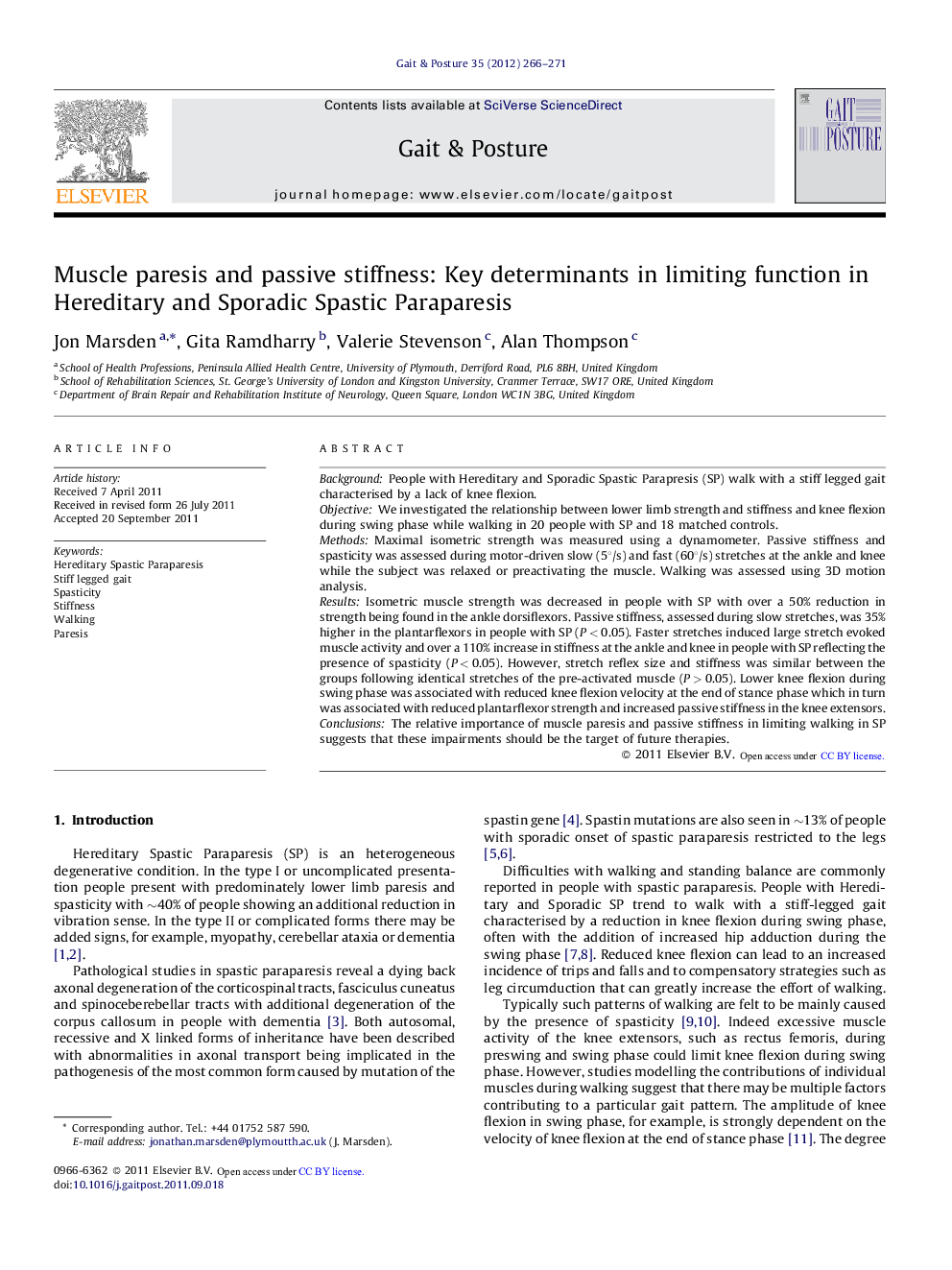| کد مقاله | کد نشریه | سال انتشار | مقاله انگلیسی | نسخه تمام متن |
|---|---|---|---|---|
| 6208128 | 1265673 | 2012 | 6 صفحه PDF | دانلود رایگان |

BackgroundPeople with Hereditary and Sporadic Spastic Parapresis (SP) walk with a stiff legged gait characterised by a lack of knee flexion.ObjectiveWe investigated the relationship between lower limb strength and stiffness and knee flexion during swing phase while walking in 20 people with SP and 18 matched controls.MethodsMaximal isometric strength was measured using a dynamometer. Passive stiffness and spasticity was assessed during motor-driven slow (5°/s) and fast (60°/s) stretches at the ankle and knee while the subject was relaxed or preactivating the muscle. Walking was assessed using 3D motion analysis.ResultsIsometric muscle strength was decreased in people with SP with over a 50% reduction in strength being found in the ankle dorsiflexors. Passive stiffness, assessed during slow stretches, was 35% higher in the plantarflexors in people with SP (P < 0.05). Faster stretches induced large stretch evoked muscle activity and over a 110% increase in stiffness at the ankle and knee in people with SP reflecting the presence of spasticity (P < 0.05). However, stretch reflex size and stiffness was similar between the groups following identical stretches of the pre-activated muscle (P > 0.05). Lower knee flexion during swing phase was associated with reduced knee flexion velocity at the end of stance phase which in turn was associated with reduced plantarflexor strength and increased passive stiffness in the knee extensors.ConclusionsThe relative importance of muscle paresis and passive stiffness in limiting walking in SP suggests that these impairments should be the target of future therapies.
Journal: Gait & Posture - Volume 35, Issue 2, February 2012, Pages 266-271